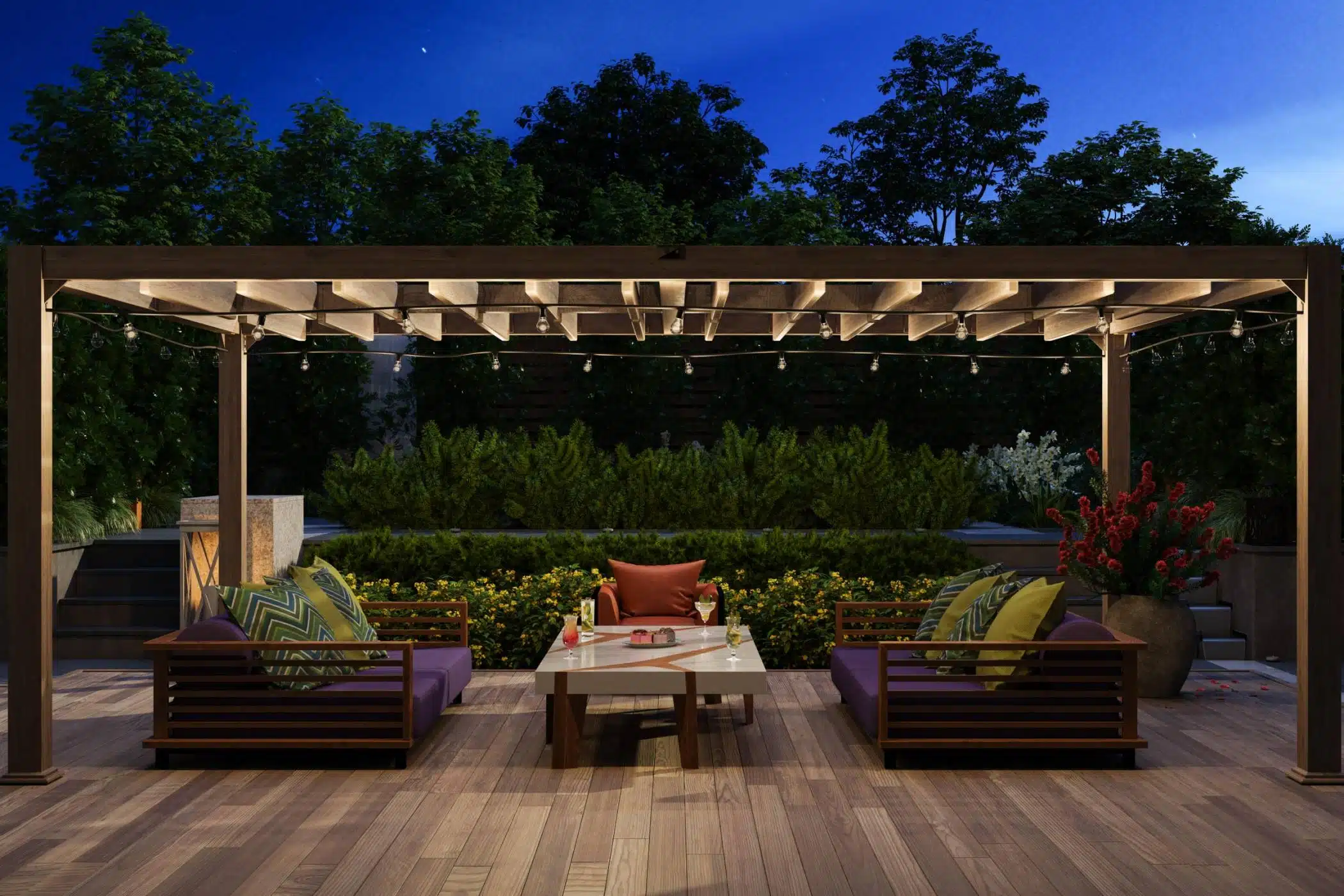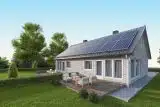Designing Outdoor Living Spaces to Complement Your Custom Home
General
Posted by: Tyler Miller 1 month ago
When you design a custom home, it’s not just about the interior. The outdoor living space plays a key role in enhancing your home’s overall appeal and functionality.
A well-designed outdoor area can seamlessly extend the living space of your home, providing an inviting place for relaxation, entertainment, and connection with nature.

Here are our top 10 important factors to consider when designing outdoor living spaces to complement your custom home.
1. Assess Your Space And Surroundings
Before diving into design choices, take time to assess your property. Consider the shape, size, and layout of the land surrounding your home. Are there views you want to highlight? Are there any natural elements such as trees, gardens, or water features that should be incorporated into the design?
Understanding the environment allows you to make design choices that complement both your home and the natural surroundings.
2. Clearly Define Your Needs And Purpose
Think about how you want to use your outdoor space. Do you want a cozy area for family gatherings? Or do you envision a larger space for entertaining guests with outdoor kitchens, dining areas, and lounges?
Identifying the purpose of your outdoor living space will help you choose the right elements, such as seating, lighting, and landscaping features, to achieve the desired ambiance.
3. Create Zones For Different Activities
One way to maximize your outdoor space is by creating distinct zones for different activities. You could design a dining area with a table and chairs for meals, a lounging area with comfortable seating, and a play area for children or pets.
By separating the spaces, you make the outdoor living area more functional while maintaining a cohesive design that flows seamlessly with your custom home.
4. Choose Durable, Low-Maintenance Materials
When selecting materials for your outdoor living space, consider durability and ease of maintenance. Choose materials that can withstand exposure to the elements without requiring frequent upkeep.
For example, opt for weather-resistant furniture, outdoor rugs, and decking materials such as composite or natural wood. Similarly, landscaping elements like stone pathways, gravel, or native plants require less care and create an attractive, sustainable environment.
5. Incorporate Lighting For Ambience And Safety
Proper lighting enhances the beauty and functionality of an outdoor space, especially in the evening. Use a combination of ambient, task, and accent lighting to create different moods. Install pathway lights to ensure safety and use string lights, lanterns, or sconces to add charm to dining or lounging areas.
Lighting also highlights architectural features, plants, and trees, making your outdoor space feel inviting and warm at night.
6. Integrate Indoor And Outdoor Living
One of the goals when designing outdoor living spaces is to create a smooth transition from the inside of your home to the outside. Consider large sliding doors, glass walls, or open floor plans that connect your indoor and outdoor spaces.
This creates an open, airy feeling and allows natural light to flood your home, while also offering easy access to your outdoor areas.
7. Select Complementary Colors And Styles
When designing your outdoor living space, ensure that it complements the architectural style and color scheme of your custom home. Select colors, materials, and textures that work well with the exterior design of your home.
For example, if your home has a modern aesthetic, choose sleek, minimalist furniture and neutral tones. For a more traditional home, opt for warm wood tones and classic furniture pieces.
8. Plan For Privacy
Privacy is an important consideration in outdoor design, especially if your space is visible from the street or neighboring properties.
Incorporate elements like privacy screens, fences, tall plants, or hedges to create secluded areas where you can enjoy your outdoor living space without feeling exposed. These elements not only provide privacy but also contribute to the aesthetic and ambiance of the space.
9. Add Personal Touches
Your outdoor living space should reflect your personal style and preferences. Add personal touches like decorative throw pillows, artwork, or sculptures that match the overall design of your home.
Consider incorporating outdoor features like fire pits, water fountains, or a garden to create a space that is truly unique and inviting.
10. Plan For Seasonal Use
Design your outdoor space with the seasons in mind. Incorporate features that allow for year-round use, such as a covered patio for rainy days or a fire pit to stay warm during cooler months.
You might also want to include adjustable elements like retractable awnings or heating lamps to extend the use of your outdoor area throughout the year.
Elevate Your Custom Home With Timber Rock Construction
Designing an outdoor living space that complements your custom home involves thoughtful planning and attention to detail.
By considering your needs, creating defined zones, selecting durable materials, and integrating design elements that flow with your home’s style, you can craft an outdoor space that enhances your lifestyle.
Ready to bring your dream outdoor living space to life? Contact Timber Rock Construction today to start designing an outdoor area that complements your custom home and enhances your lifestyle.
Our team is here to guide you through every step of the process, from concept to completion. Let’s create the perfect space for you to relax, entertain, and enjoy nature. Reach out now to get started!
Categories:
You May Be Interested In:

The Long-Term Benefits of Energy-Efficient Home Design
2 weeks ago by Tyler Miller

One vs. Two-Story Homes: Which Is Best For You?
4 weeks ago by Tyler Miller

Why Carpet Is The Best Option For Bedroom Flooring
2 months ago by Tyler Miller

When To Start Planning Your Custom Home For A 2026 Move-In
2 months ago by Tyler Miller